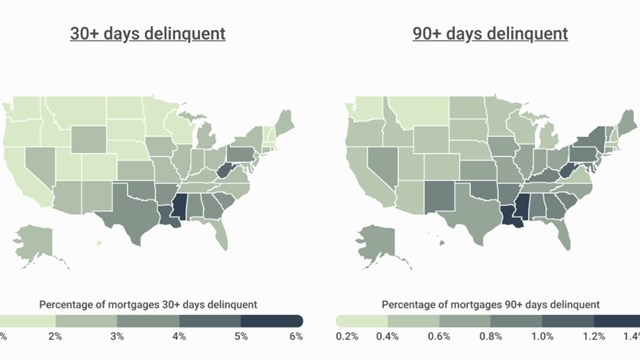Like just about every other occupation on the planet, property management has been profoundly altered by the coronavirus pandemic and the changes it’s brought to society at large, with many of the challenges and stressors we’ve all had to face hitting residential management industry professionals especially hard. Despite the proliferation of apps and other innovations that have enabled many tasks to be handled remotely, the fact remains that for everything from physical plant maintenance to apartment inspections to resolving resident conflicts, property management remains a hands-on job. Adjusting to the “new normal” of periodic lockdowns, remote meetings, social distancing, and the ubiquitous threat of a deadly virus has certainly taken its toll on everyone in the business. But it’s also led to some silver linings and unexpected bright spots along the way.
Going Remote, for Better or Worse
Depending on the industry—and who you ask—remote work, virtual everything, and the technology used to make it all possible have been either a blessing or a curse (or a fair bit of both). On the one hand, many can skip the commute and work in their PJs, and companies can save on the overhead expenses that go with a brick-and-mortar office. On the other hand, many employees miss out on friendly water cooler chat and the ability to conduct business with colleagues in person.
Across the country, property managers express the same duality in their experience, finding that while platforms like Zoom and Skype have enabled them to continue serving their client communities and keep things operating despite restrictions on indoor gatherings and other face-to-face interactions, there really is no substitute—and in many cases, managers consider an in-person, on-the-ground approach to be among their best professional assets.
Michael Refat, CMCA, MBA, is regional director for FirstService Residential in New England. He says, “One of the biggest impacts [of these past two years] is managers not being able to go to buildings. As property managers, we’re supposed to go meet the trustees, inspect the buildings, meet the on-site staff, meet the vendors. So now everybody is meeting virtually, [and] the downside to this is that you don’t have that personal touch, that connection; you don’t get to establish a relationship that way. So property management has been negatively impacted by the lack of ability to go to the sites and the lack of ability to establish relationships with vendors, trustees, service providers, and on-site staff. And of course, when I don’t go to inspect the property as frequently as I used to, or I’m more restricted in my ability to visit the units, then my work is negatively impacted.”
On the flip side of the equation, but with equal impact on property managers, is the fact that the residents in many multifamily properties are themselves now part of this new remote workforce. Now they’re home throughout the day, noticing that the hallway carpeting is getting worn, or that they’re disturbed by their neighbor’s afternoon tuba lesson, and they expect their managers to respond to these grievances right away, no matter the day or time. Claudine Gruen, vice president, director of operations for Garthchester Realty based in Queens, says that the volume of emails her staff receives is “overwhelming” and that “people have lost their ability to be patient.” Residents tend to forget that theirs is not the only issue in a building or community, she says, and they assume that an ‘open 24 hours’ communication platform like email implies a 24-hours-a-day response.
All that being said, working remotely has brought some welcome balance into the lives of some managers who pre-pandemic might have spent hours on long commutes running between properties every day, then into the evening to attend board meetings, which are usually held after 6 p.m. to accommodate the schedules of volunteer directors/trustees. Now, rather than remaining on-site after a full day of work or traveling there just for the meeting, property managers can participate from anywhere—and so can their board members.
“Going virtual with everything is something that I think is actually a positive that came out of the past two years,” says Alison Phillips, CMCA, AMS, CAM, vice president of multifamily and commercial at FirstService Residential based in Massachusetts. “I think it’s more conducive to everybody’s schedule to be able to do a virtual meeting rather than having to do it in person. Obviously, there are some associations that are still doing in-person meetings or have just recently restarted them, but [at] my associations, the boards are made up of various demographics—I have some working; I have some retired folks—and virtual [meetings are] easy for all of them to be able to attend, because we all have different schedules.”
The Digital Divide
Refat feels that as time goes on, the speed with which technologies for successfully navigating remote work were adopted will have broader impacts on the property management industry. “I’ve seen many people in the industry who could not keep up and eventually retired,” he says. “So as everything shifts electronically, you have to be really up to speed on all the computer software systems, and to have that strong system in your home, or at least to be able to buy it. I upgraded everything—my computer, my workstation, my printer; I got a scanner—all so I can do things quickly, and am able to interact with the service providers, the engineers, the vendors, the work orders, the insurance claims. Everything is happening virtually now, so if you’re not up to speed, you may struggle.”
While the fast pivot to virtual may lead to some early retirements or company consolidations, it may also open the door for a younger, more diverse cohort of property managers who might not have entered the field due to time constraints, such as young parents or someone earning an advanced degree. With a larger technology skill set and more comfort navigating virtually, a new generation of property managers might think nothing of the shifts to remote work brought about by the pandemic. Refat contends that it might be a bumpy transition, however, since these newcomers won’t necessarily have the benefit of the institutional knowledge transfer from their older counterparts, nor the ability to learn from or ask questions to a colleague in the office setting.
“Our industry is a high turnover industry,” Refat goes on to say. “Managers come and go—I think the nationwide average is three to five years. So you always have newcomers.” Without the traditional office environment, and with a new knowledge balance, training those newcomers and stabilizing the workforce will have to employ new strategies and processes. Maybe the younger folks can teach their elders the ways of Snapchat and GoogleMeets, but people who grew up in the Digital Age—especially after the interpersonal deprivations of the pandemic—might need some training on social interaction. Refat tells new hires, “Think [carefully] before you join this industry. Because you can’t just do business; you have to be a social worker, you have to have social skills. You actually have to pick up the phone and interact with the customer. You have to have some social skills, and some patience. Because we are one of the few industries left where you still interact directly with a professional. That’s gone in most other industries.”
Vendor-Bender
As the world approaches year three of the pandemic, the broader implications of months of shut-down, economic instability, supply chain disruptions, and staffing shortages have all taken their toll across industries. For property managers—who interact with all kinds of providers from landscapers to elevator repair companies to insurance agents—the effects are exponential.
Phillips explains that with limited staff—as well as the unpredictability of workers being out sick, with COVID or otherwise—contractors are less willing to commit to jobs, lest they risk overpromising and underperforming. Other vendors might be having supply chain issues, so while they may want the job, they aren’t sure when they will be able to actually do it. And then a contractor might make an about-face when they add another hire, or when another client cancels—which leaves the manager scrambling to get the contract in front of the board for approval. Gruen adds that all of this fluctuation affects costs for both labor and goods, so contract negotiations are complicated as well.
“If we’re not on email or Zoom,” she says, “we’re on the phone, dealing with vendors, adjusting expectations on all sides of the equation. They might be down a worker, or we might have someone out who normally liaises with providers, leaving added work for us. All of this is unpredictable, leading to changes or negotiations on the fly. It can get very stressful at times.”
“I’m doing some roofs at [a client] property and [the roofer] can’t commit on timing,” adds Phillips. “They know that they want the job, they just don’t know when their rubber roofing is going to be available. So it’s difficult for them as much as it’s difficult for us. They want to secure work, but they can’t make any promises as to when the work can be completed. And then neither can we.”
On the other hand, Phillips continues, “I think for the most part, the boards understand that there are things outside of our control, because they’re experiencing it in their own lives as well. It’s not as though we’re coming up with some kind of unreasonable reason why we can’t perform work—it’s a very logical and public challenge that we’re all facing. So maybe they want us to get more bids than we would typically do—instead of maybe doing three, they might suggest getting five. So there is a little bit of extra work required on our end.”
Added to that, a lot of associations and co-op corporations are pulling the trigger on projects they had been putting off, whether because of shutdowns or restrictions early in the pandemic, or because of lack of financing, or simply because of the longstanding deferral mentality that exists in many HOAs and co-op corporations. Tragic consequences of the latter came into stark relief in June when the collapse of the Champlain Towers Condominium killed 98 people in Surfside, Florida. That awakening, in addition to historically low interest rates, tightened lending practices, new insurance guidelines, and the fact that more residents are home during the day and want to see repairs and upgrades made to their buildings or communities, has inspired boards to accelerate timelines or add more projects than they would before. But for managers like Phillips, “We just do our job as the job comes along. And, you know, nothing ever surprises me. If a board asks me to get something, I’m used to that. So it doesn’t really seem out of place to have to do it for all of my associations at the same time.”
Work-Life Balance
Perhaps one of the more sanguine responses to the unprecedented health crisis we are living through is the reassessment that we have undertaken as individuals and as a society to consider our priorities, care for ourselves and our loved ones, and maintain a more balanced life over all. Phillips relays a story about a long-time vendor who contracted COVID and nearly died. “Because of that, he’s reassessed his life and what’s meaningful to him,” she explains. “He’s decided to take on a lot less work, to approach life differently, and to value life versus spending the entire time working. In general, people have reevaluated what’s important to them. It might result in vendors having an increased expense or having a smaller staff or not taking on as much work, but I think it’s going to be a positive in the outlook of everybody. I think people are just going to be more appreciative of what they have personally.”
Darcey Gerstein is Associate Editor and a Staff Writer for CooperatorNews.







Leave a Comment